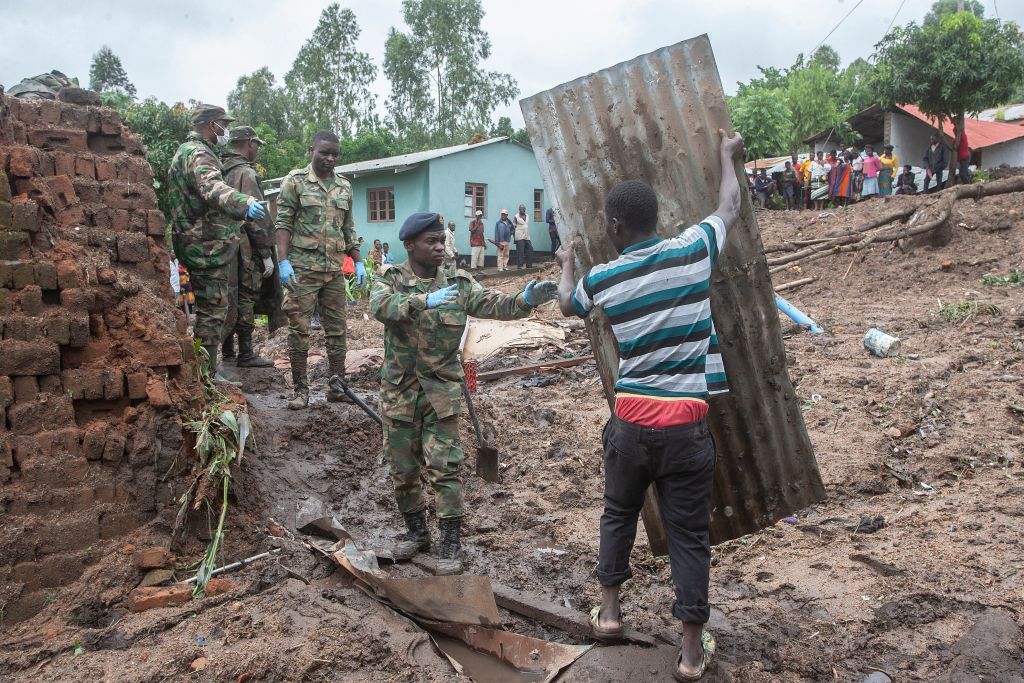
Leaders gathered in Dubai for the United Nation’s (U.N.) COP28 Climate Summit are fiercely debating loss-and-damage funding—money pledged to low-emission countries due to the costs of extreme weather and slow-onset disasters caused by high-emission countries. The central question is how exactly to use the $700 million in current contributions to a U.N. fund established in 2023 at COP27. The obvious answer should be: give the money directly to vulnerable people living on the frontlines of the climate crisis.
This is exactly what Scotland’s new loss-and-damage program will do. In acknowledgement of the country’s outsized role in emissions, the government is sending approximately $750 to families in Malawi displaced earlier this year by Cyclone Freddy, one of the worst storms in recorded history.
What will recipients do with this much cash in hand? I visited survivors of past storms in Malawi who chose to spend their cash payments repairing and strengthening damaged homes and adopting improved farming techniques, such as regenerative agriculture, that boost tolerance to droughts and floods. And a USAID study in Malawi found that families who received large cash sums were more food secure than a control group even two years later.
Cyclone Freddy killed over 1,000 people in Malawi alone, and wreaked havoc on crops, infrastructure, and homes, with six-months-worth of rain typical in the region falling in just six days. By giving funds to the survivors, Scotland is granting its climate justice dollars as directly as possible.
Some feel that spending on climate loss and damage or adaptation is defeatist, preferring to exclusively focus on mitigating emissions. However, the reality is our collective failures to curb emissions quickly enough have significantly increased global average temperatures, which is already causing climate chaos. Worsening forest fires, floods, storms, and droughts are costing the world an additional $143 billion per year. While the rich can afford insurance, the world’s poorest communities may lose their homes, livelihoods, and lives.
Providing small cash payments to relieve the impacts of climate change as part of social protection systems is an established practice. However, sending survivors larger lump-sums is disappointingly rare, despite robust evidence that it significantly reduces multi-dimensional poverty and vulnerability.
A single cash injection sized to a poor household’s annual income gives families the flexibility to address the loss and damage they’ve experienced in a wide range of ways. One could call them the ultimate “localized” solution, restoring dignity and choice for recipients.
Notable climate activist Elizabeth Wathuti visited cash programs in drought-prone Kenya, where families have used their $750 planting trees, adapting farms, and pooling funds to install water infrastructure. “This kind of climate financing is working for communities because they are picking projects that actually have a social enterprise angle that is helping them build resilience,” says Wathuti. “They can sustain themselves in the coming years.” We also know from rigorous study that every $1 given as a cash transfers is used multiple times in local businesses generating as much as $2.50 in wider economic impacts.
Most excitingly, sending digital cash to mobile phones allows us to efficiently and effectively reach those most in need. The Covid pandemic spurred significant innovations, with countries like Togo testing remote targeting methods to rapidly deliver funds to citizens not previously registered on national systems. GiveDirectly, the nonprofit I work for, uses similar technology to send Anticipatory Action funds just ahead of extreme weather to reduce or prevent losses. This tech can leapfrog previously slow processes needed to enroll and send support to families in need.
Saleemul Huq, the late climate leader instrumental to creating the U.N.’s fund, told Nature in 2022 that “loss and damage isn’t aid,” because it is based on the “polluter pays” principle. “When money is given as aid, all the power rests with the donor,” he said. But communities need to be “in the driving seat”—and that is what loss-and-damage programs can provide.
Climate finance has been excessively hard for low-income countries—let alone low-income families—to access. As administrator of the U.N.’s new loss-and-damage fund, the World Bank now has the opportunity to buck that trend. With its vast experience in social protection, it knows how to deliver cash. Will it be willing to place more trust—and money—into the hands of the most impacted families?
While not all losses and damage are economic, direct cash can be transformational for survivors. I lay down the challenge: give the money and decision-making power to the real experts—the people already living with the harshest realities of the climate crisis.
More Must-Reads From TIME
- The 100 Most Influential People of 2024
- Coco Gauff Is Playing for Herself Now
- Scenes From Pro-Palestinian Encampments Across U.S. Universities
- 6 Compliments That Land Every Time
- If You're Dating Right Now , You're Brave: Column
- The AI That Could Heal a Divided Internet
- Fallout Is a Brilliant Model for the Future of Video Game Adaptations
- Want Weekly Recs on What to Watch, Read, and More? Sign Up for Worth Your Time
Contact us at letters@time.com